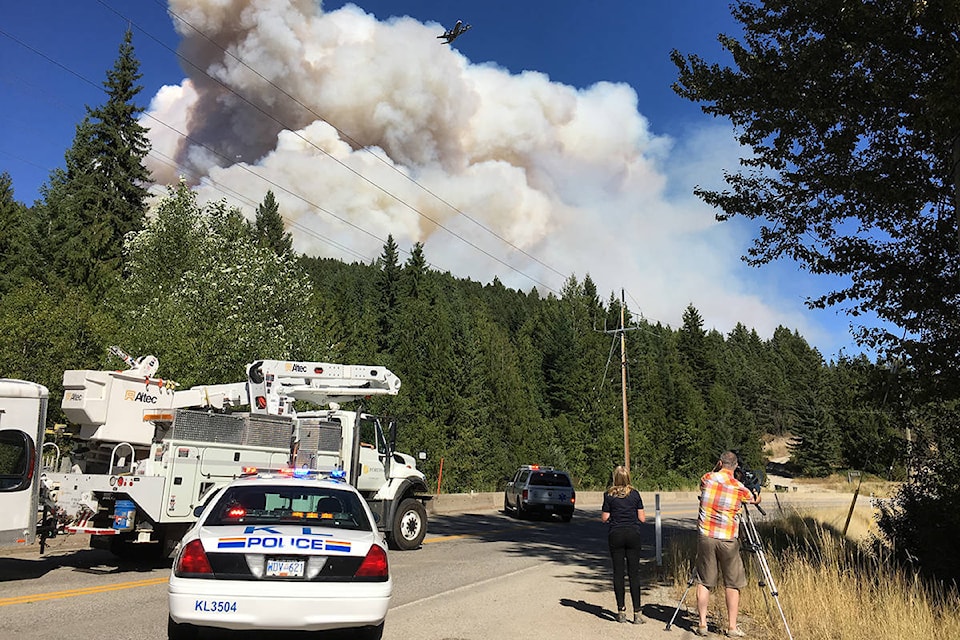The Regional District of Okanagan-Similkameen’s intent to apply for more than $500,000 in funding to mitigate the risk of wildfire in urban interface areas has caught the attention of the valley’s neighbouring regional districts.
The RDOS wants to carry out two prescribed burns for areas at Ellis Creek, east of Penticton, and Arawana, east of Naramata, at combined cost of $585,000.
Related: Lack of wildfire brings deer closer to cities
Under a provincially funded program administered by the Union of B.C. Municipalities, 90 per cent of those costs could be covered, amounting to just over $525,000.
The remaining cost would all be covered by different groups—largely by the Wild Sheep Foundation and the Wild Sheep Society of B.C.
According to RDOS staff report, the two prescribed burn sites pose “an interface wildfire risk to the adjacent community and require fuel hazard abatement to reduce the risk.”
Officials with the regional districts for the Central and North Okanagan would like to utilize that potential availability of funding in a similar manner.
Bruce Smith, communications officer for RDCO, said wildfire mitigation efforts have been at the forefront of the regional district since the 2003 Kelowna Mountain wildfire that consumed more than 25,000 hectares of forest and park land east and south of the city, forced the evacuation of 27,000 people and destroyed 239 homes.
“We understand what RDOS is applying for is new, slightly different than how funding for wildfire fuel modification programs have been allocated in the past. Our regional district has not submitted any applications yet but we will be looking into it,” Smith said.
Related story: B.C. failed to reduce wildfire risk
He noted the RDCO has secured more than $1 million in funding since 2003 from various funding sources for wildlife mitigation initiatives, many of them focused on local regional parks such as Rose Valley, Kalamoir, Mission Creek Greenway, Scenic Canyon, Woodhaven and Glen Canyon.
“Last year, we received a grant for $65,000 under the provincial community strategic wildfire prevention initiative program for Mill Creek Regional Park, but the flooding last spring meant we have to delay doing that work until next spring and fall,” Smith said.
“Certainly there has been a change in attitude about the importance of these programs since what we learned in 2003 and from our perspective, there is still more work to be done.”
Related story: Fire hazard debris burning
Smith also noted the Westbank First Nation has also been accessing wildfire mitigation funding for forest land under its control across the Westside stretching form Peachland to Trader’s Cove.
Bob Fleming, chair of the Regional District of North Okanagan board and a rural electoral area director, said urban interface buildup is not as concentrated in his region compared to the RDOS or RDCO, but the fire mitigation issue remains a shared concern.
He said east of Vernon and the communities of Lumby, Coldstream, Enderby and Spallumcheen are surrounded by forest and present urban interface challenges.
And past fuel mitigation efforts have been done around the Silver Star Ski Resort and Vernon Mountain.
“We may not have the same dense housing issues, but we have the same concerns. It is something at the forefront of our minds as we seemed to dodge some major bullets this year given some of the fires in Central Okanagan, and in particular Joe Rich region, this past summer,” Fleming said.
Fleming said urban construction on interface mountain slopes coupled with the impact of climate change play a role in his regional district’s susceptibility to forest fires.
“It’s a concern for everyone at the municipal governance level, us as well, so when we see the province shifting to focus more money on interface mitigation efforts as opposed to spending it all fighting forest fires, that’s viewed as a positive thing,” he said.
To report a typo, email: edit@kelownacapnews.com.
<>@BarryGerding
barry.gerding@blackpress.ca
Like us on Facebook and follow us on Twitter.
